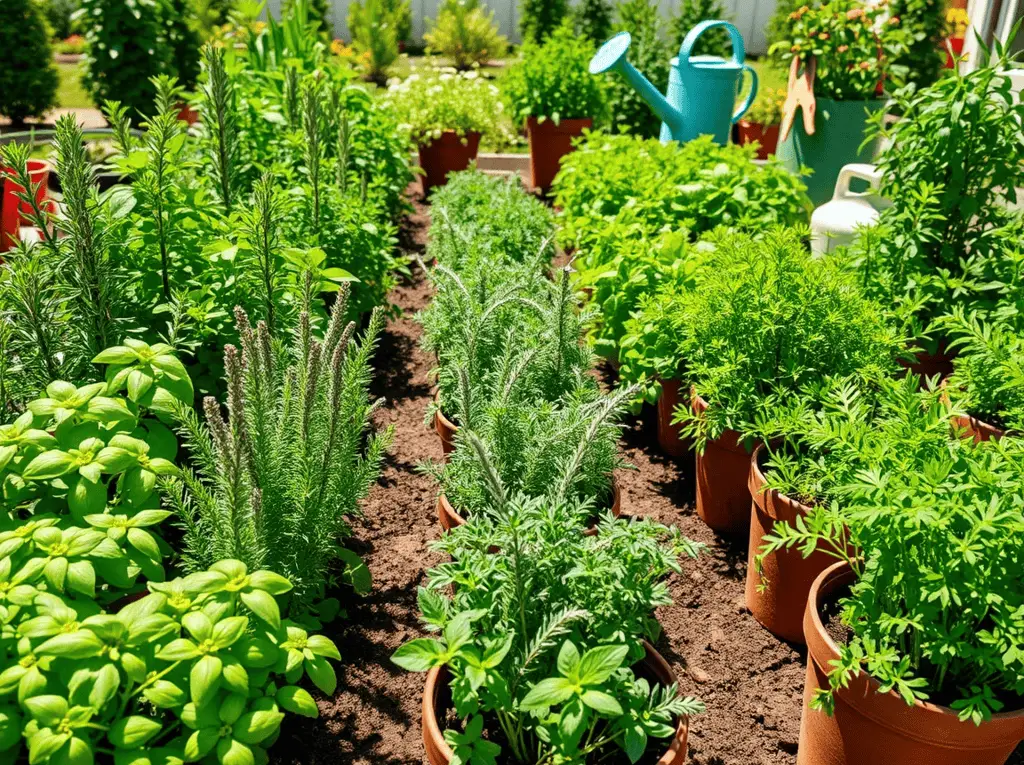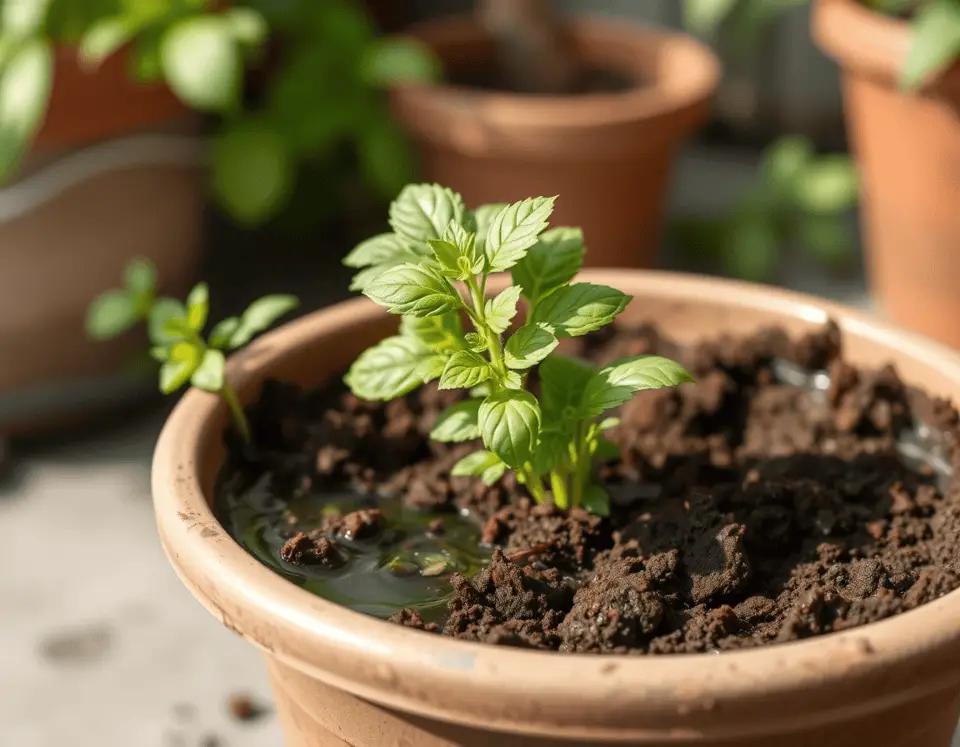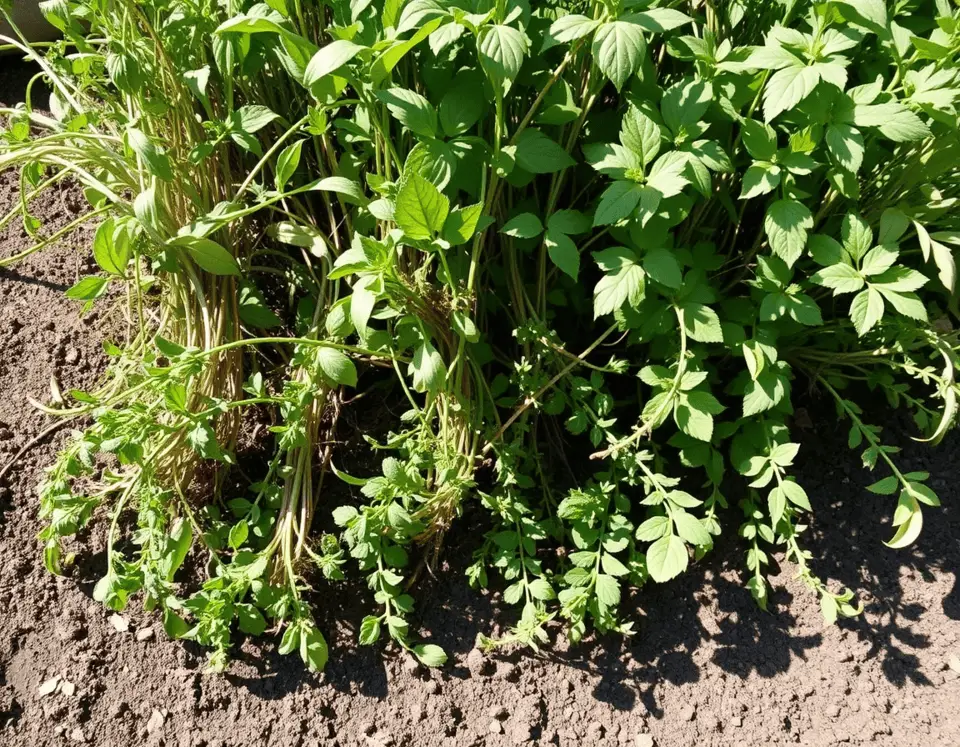Top Herb Gardening Mistakes and How to Avoid Them Easily!
Think your herbs are struggling for no reason? You might be making a few simple herb gardening mistakes without even realizing it. From picking the wrong pots to planting at the wrong time, these slip-ups can stunt growth or kill your plants entirely. In this post, we’ll break down the most common mistakes, and show you how to fix them so your herb garden thrives.
Table of Contents
- 1 Top Herb Garden Mistakes (And How to Avoid Them)
- 1.1 1. Using the Wrong Soil or Poor Drainage
- 1.2 2. Planting in the Wrong Location
- 1.3 3. Overcrowding Your Herbs
- 1.4 4. Choosing the Wrong Containers
- 1.5 5. Not Learning About Herb Varieties
- 1.6 6. Letting Herbs Flower Too Early
- 1.7 7. Skipping Mulch
- 1.8 8. Overwatering or Underwatering
- 1.9 Neglecting to Fertilize or Add Nutrients
- 1.10 Not Pruning or Harvesting Correctly
- 1.11 Growing During the Wrong Season
- 2 Frequently Overlooked Mistakes
- 3 Expert Strategies for a Thriving Herb Garden
- 4 Summary Table: Common Herb Garden Mistakes and Solutions
- 5 Final Thoughts
- 6 Author
Top Herb Garden Mistakes (And How to Avoid Them)
1. Using the Wrong Soil or Poor Drainage
The foundation of a healthy herb garden lies in the soil. Many gardeners mistakenly use ordinary garden soil in pots, unaware that it’s often too dense and can suffocate roots or harbor unwanted pests. This mistake can lead to stunted growth, yellowing leaves, and even root rot. Herbs thrive in a well-draining, nutrient-rich potting mix designed for container plants, which ensures roots get both air and moisture in the right balance.
Expert Tip:
Before planting, always pre-moisten your potting mix. Dry bagged soil can repel water, making it hard for roots to absorb moisture. Consider mixing in perlite or coarse sand to improve drainage, especially for Mediterranean herbs like rosemary and thyme that prefer drier conditions.
2. Planting in the Wrong Location
Herbs are particular about their environment, and placing them in the wrong spot can spell disaster. Sun-loving herbs such as basil, rosemary, and oregano need at least six hours of direct sunlight daily, while others like parsley or mint can tolerate partial shade. Planting herbs in unsuitable light conditions leads to weak, leggy growth and diminished flavor.
How to Avoid:
Research each herb’s specific light and temperature needs before planting. Use the sunniest window for indoor gardens or choose a south-facing spot outdoors. Group herbs with similar requirements together to simplify care and ensure each plant gets what it needs to thrive.
3. Overcrowding Your Herbs
It’s tempting to maximize space by squeezing multiple herbs into one pot or garden bed, but overcrowding is a recipe for problems. Plants compete for water, nutrients, and sunlight, which can stunt growth and increase susceptibility to disease. Overcrowded herbs often develop poor air circulation, leading to mold and mildew.
Solution:
Give every herb enough room to mature by following spacing recommendations on plant tags or seed packets. In containers, select a pot just slightly larger than the root ball and avoid mixing aggressive growers like mint with more delicate herbs. Remember, herbs will fill out over time, so initial spacing pays off with healthier plants.
4. Choosing the Wrong Containers
Container selection is more important than many realize. Pots without drainage holes or those that are improperly sized can trap excess water, causing root rot, or restrict root development, leading to stunted plants. The material of the pot, plastic, clay, ceramic, also affects how quickly soil dries out.
Best Practice:
Always use containers with drainage holes to prevent water from accumulating at the bottom. Choose a pot size that allows room for roots to grow but isn’t so large that soil stays wet for too long. Consider the material: clay pots dry out faster, while plastic retains moisture longer, so adjust your watering accordingly.
5. Not Learning About Herb Varieties
Not all herbs are created equal, and even within a single type, there are many varieties with unique flavors and growth habits. For example, Mediterranean oregano and Mexican oregano differ in taste and climate preferences. Planting the wrong variety for your region or culinary needs can result in disappointing harvests and wasted effort.
Pro Tip:
Read seed packets and plant labels carefully to understand each variety’s requirements. Choose herbs that are well-suited to your local climate and intended use in the kitchen. Don’t be afraid to experiment, but start with tried-and-true varieties before branching out.
6. Letting Herbs Flower Too Early
When herbs bolt and produce flowers, they shift their energy from leaf production to seed-making. This transition often results in leaves that are smaller, tougher, and sometimes bitter. Early flowering can drastically reduce your harvest window, especially for annual herbs like basil and cilantro.
How to Prevent:
Regularly pinch off flower buds as soon as they appear to encourage bushier growth and prolong the harvest period. This simple step keeps the plant focused on producing flavorful leaves, ensuring a longer, more productive season.
7. Skipping Mulch
Mulching is often overlooked in herb gardens, but it offers several benefits. Mulch helps retain soil moisture, suppresses weeds, and stabilizes soil temperature, all of which contribute to healthier plants. Without mulch, herbs may dry out quickly, especially during hot weather, and you’ll spend more time watering and weeding.
How to Mulch Correctly:
Apply a thin layer of organic mulch, such as shredded leaves, straw, or bark, around your herbs. Keep the mulch a few inches away from the stems to prevent rot and discourage pests. Mulching is especially beneficial for outdoor herb beds, but can also help with large container gardens.
8. Overwatering or Underwatering
Watering mistakes are among the most common issues in herb gardening. While herbs generally prefer slightly dry conditions, overwatering leads to soggy soil and root rot, while underwatering causes wilting and poor growth. Each herb species has its own moisture preference, making it important to tailor your watering routine.
Watering Tips:
Let the top inch of soil dry out before watering again, and always check soil moisture with your finger. Use pots with drainage holes to prevent water from accumulating at the bottom. Adjust your watering frequency based on the season and weather conditions, as herbs need less water during cooler months.
Neglecting to Fertilize or Add Nutrients
Herbs, like all plants, require nutrients to grow vigorously and develop robust flavors. Over time, soil can become depleted, especially in containers, leading to weak, pale, or flavorless herbs. Failing to refresh soil or add organic matter can significantly reduce your garden’s productivity.
What to Do:
Incorporate compost or organic fertilizer into your soil at the start of each growing season. For container herbs, use a slow-release fertilizer or supplement with liquid feed every few weeks. Regularly amending your soil ensures your herbs have access to the nutrients they need for optimal growth.
Not Pruning or Harvesting Correctly
Some gardeners hesitate to prune their herbs, fearing they’ll damage the plants. However, regular harvesting and pruning actually promote bushier, healthier growth and prevent herbs from becoming leggy or woody. Neglecting this step can result in sparse, unproductive plants.
Harvesting Advice:
Trim herbs frequently, but never remove more than one-third of the plant at a time to avoid stressing it. Always harvest above a leaf node, which encourages branching and new growth. Use clean, sharp scissors or simply pinch with your fingers for tender stems.
Growing During the Wrong Season
Planting herbs at the wrong time of year is a common mistake that can lead to slow growth, poor flavor, or even dead plants. Many herbs are sensitive to temperature and sunlight, and if planted too early or too late, they won’t thrive. For example, basil hates cold weather, while rosemary prefers mild, dry conditions.
Best Practice:
Know your local growing zone and pay attention to each herb’s seasonal needs. Most herbs do best when planted in spring after the last frost or in early fall in mild climates. Use indoor starts or grow lights if you want to begin earlier. For year-round herbs, like chives or parsley, consider growing them indoors during colder months.
Frequently Overlooked Mistakes
Not Growing Mint in Containers
Mint is notorious for its aggressive spreading habit and can quickly overtake a garden bed, crowding out other herbs. To keep mint under control and prevent it from becoming invasive, always plant it in its own container, separate from other herbs.
Forgetting to Watch for Pests
Herbs are not immune to pests and diseases. Aphids, spider mites, and fungal infections can all cause problems if left unchecked. Regularly inspect your plants for signs of trouble, such as discolored leaves or sticky residue, and take action early to prevent infestations from spreading.
Using Chemicals on Edible Herbs
Spraying herbs with chemical pesticides or fungicides is risky, especially if you plan to eat them. Many chemicals are not safe for edible plants and can leave harmful residues. Instead, opt for organic or homemade pest control methods and always wash herbs thoroughly before use.
Expert Strategies for a Thriving Herb Garden
- Start Small: If you’re new to herb gardening, begin with a few easy-to-grow varieties and focus on mastering their care before expanding your collection. This approach builds confidence and helps you avoid feeling overwhelmed.
- Pet Your Herbs: Gently brushing your hands over indoor herbs mimics the effect of wind, which strengthens stems and encourages sturdier growth. This simple practice is especially helpful for herbs grown indoors without natural breezes.
- Niche Down and Be an Expert: Concentrate on growing herbs you use most often in your cooking and learn everything you can about their specific needs. Specializing allows you to develop expertise and consistently achieve better results.
Summary Table: Common Herb Garden Mistakes and Solutions
| Mistake | Why It’s a Problem | Solution |
|---|---|---|
| Wrong soil/drainage | Poor growth, root rot, pests | Use potting mix, pre-moisten, add perlite |
| Wrong location | Stunted, weak, or leggy plants | Match light and climate to herb needs |
| Overcrowding | Competition, disease, poor airflow | Space plants properly, avoid mixing mint |
| Wrong container | Root issues, waterlogging, stress | Use correct size with drainage holes |
| Not learning varieties | Poor flavor, wrong growth, failure | Research before planting, choose wisely |
| Letting herbs flower | Reduced leaf yield, bitter taste | Pinch off flower buds early and often |
| Skipping mulch | Water loss, weeds, temperature flux | Mulch correctly, keep away from stems |
| Over/underwatering | Root rot or wilted, stressed plants | Check soil before watering, adjust routine |
| Not fertilizing | Weak, pale, flavorless herbs | Add compost or organic fertilizer annually |
| Not pruning/harvesting | Leggy, unproductive, woody plants | Harvest and prune regularly, above nodes |
Final Thoughts
By understanding and avoiding these common herb garden mistakes, you’ll set the stage for a lush, productive, and flavorful herb garden, whether indoors or outdoors. Each herb has its own unique requirements, so take time to learn about your plants, start with a manageable selection, and apply these expert strategies. With care and attention, your herb garden will reward you with vibrant growth and abundant harvests for years to come.









